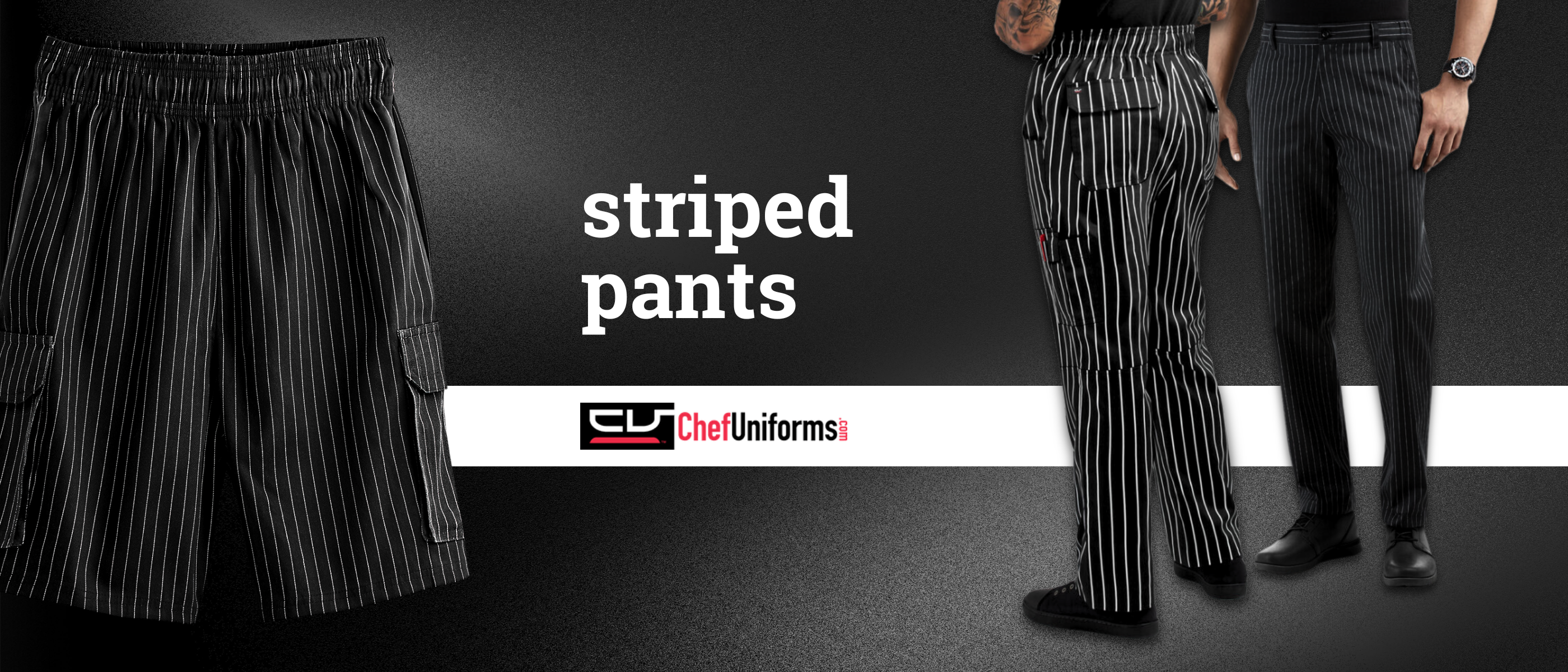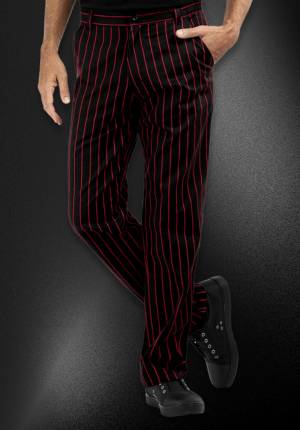Striped Pants for Chefs

In the world of culinary arts, the chef's coat is an iconic symbol of the profession. The traditional white double-breasted jacket has long been associated with chefs, but in recent years, a new trend has emerged: the black chef coat. This trend has raised some questions and concerns, particularly around the meaning and symbolism of the black coat. In this article, we'll explore what a black chef coat means, and why it has become a popular choice for chefs around the world.
A classic and distinctive staple in culinary wear
The distinctive striped pants worn by chefs are a ubiquitous part of the culinary industry. These pants, also known as "hounds-tooth" or "chalk-stripe" pants, are characterized by their unique pattern of vertical stripes. But have you ever wondered why chefs wear these pants? In this blog post, we'll explore the history and practicality behind the iconic striped pants of the culinary world.
The history of chef's pants can be traced back to the 16th century, where chefs wore simple, long white tunics and hats. These tunics were not only meant to protect the chef's clothing from stains and spills but also to show their professionalism and expertise in the kitchen. As kitchens became more organized and standardized, chefs began to wear a more recognizable uniform, which included the now-famous pants.

It is believed that the origins of the striped pattern can be traced back to the French Revolution in the late 18th century. During this time, many chefs were employed by the newly wealthy bourgeoisie, who wanted their chefs to look as impressive and elegant as possible. Striped pants, which were traditionally worn by butchers, were deemed to be a practical and fashionable option for chefs.
The stripes on chef's pants served several practical purposes. Firstly, the vertical stripes on the pants can help to disguise stains and spills. In a busy kitchen environment, where accidents are bound to happen, having a uniform that helps to hide any stains is a practical advantage. Additionally, the stripes are said to have a slimming effect, making the wearer appear taller and thinner.
Another reason why chefs wear striped pants is that the pattern is said to help to prevent cross-contamination. In a busy kitchen environment, it is important to maintain hygiene standards to prevent the spread of harmful bacteria. The stripes on the pants help to identify any dirt or food particles that may have landed on the chef's clothing, making it easier to ensure that proper cleaning and hygiene practices are followed.
The tradition behind stripes
The material used to make chef's pants is also important. Chef's pants are typically made of a lightweight and breathable material, such as cotton or a cotton-polyester blend. This allows the chef to move freely and stay cool in a hot kitchen environment, which can often reach temperatures of over 100 degrees Fahrenheit.
The design of chef's pants has also evolved over time to meet the needs of modern chefs. Many chefs now wear pants that have additional features, such as reinforced knees, which can help to reduce wear and tear and provide extra protection for the chef's legs. Some pants also feature elasticated waistbands or drawstrings, which can be adjusted for comfort and ensure a secure fit. In addition to the practical benefits, wearing striped pants is also a way for chefs to identify themselves as part of a professional community. The distinctive uniform helps to create a sense of unity among chefs and reinforces the idea that cooking is a serious and respected profession.
In recent years, there has been a trend towards more personalized uniforms in the culinary industry, with some chefs opting for brightly colored or patterned pants. However, the classic striped pants remain a staple of the culinary world, and many chefs continue to wear them as a symbol of their profession and expertise.
In conclusion, the striped pants worn by chefs have a long and fascinating history. Originally designed to meet the needs of a growing culinary profession, these pants have become an iconic part of the culinary world. With their practicality, distinctive design, and ability to create a sense of community among chefs, it's no wonder that they continue to be worn by culinary professionals around the world. Whether you're a seasoned chef or an aspiring home cook, the classic striped pants are a symbol of the dedication and professionalism that goes into the art of cooking.


